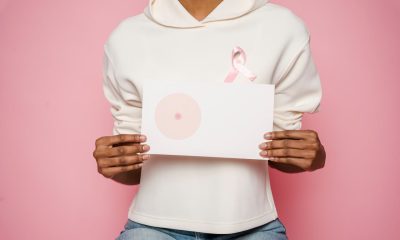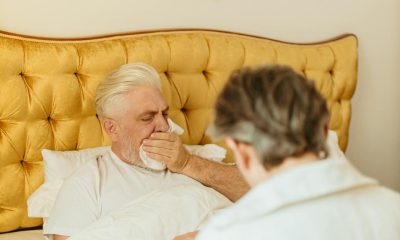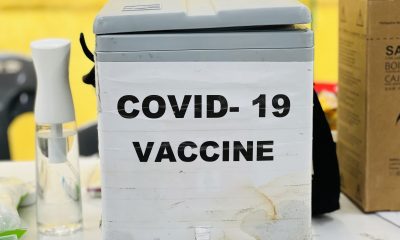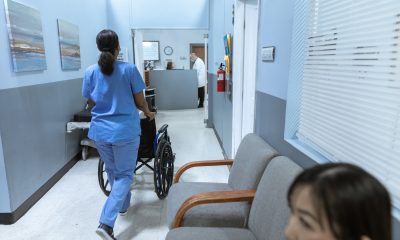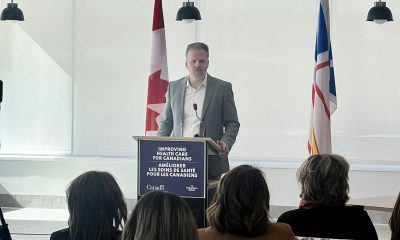Lifestyle
The human microbiome is a treasure trove waiting to be unlocked

Microbes are a part of all multicellular organisms, where they perform a myriad of functions essential to life, including the digestion of nutrients and signalling processes. (File Photo: screenpunk/Flickr, CC BY-NC 2.0)
Bacteria are at the centre of all life forms on planet earth and are the essential building blocks that make living organisms the way they are.
Both the mitochondrion — found in most organisms, which generates energy in the cell — and the chloroplast — the solar energy-harvester located in plants — can be traced to their bacterial ancestors. These specialized microbes laid the foundation for the biodiversity we live amongst.
Microbes are a part of all multicellular organisms, where they perform a myriad of functions essential to life, including the digestion of nutrients and signalling processes. The microbes that are an integral component of living organisms are referred to as the microbiome. The microbiome is found in creatures as simple as the hydra and as complex as humans, elephants and trees.
Human microbiome
Microbes are part of humans from the initial stage of development and play an important role in the functioning of the human body. The human microbiome is composed of viruses, bacteria and fungi residing in communities within and on the body.
Even though these microbes have always been part of the human anatomy, they were visualized only recently with technological advances like molecular imaging tools and next-generation genetic sequencing. We can now visualize these microbial entities as they operate and execute vital tasks.
The human microbiome is one of the largest organs, weighing approximately two to three kilograms in an adult. Although it is invisible, the microbiome makes its physical presence evident with occasional noises and smells.
The microbiome bestows on us the unique traits we possess. The make-up of the microbiome changes during our life span, and a decrease in the number and diversity of its constituents is associated with diseases and ageing. In fact, healthy individuals and centenarians are known to house a wider diversity of microbial partners than unhealthy individuals.
Location-specific functions
The microbiome works in harmony with various organs in the body and aids in the proper functioning of a human being. For example, microbes living on the surface of the skin guard against invasion from opportunistic bacteria and pathogens. These microbes also help in healing wounds, fortifying the immune system and producing volatile signalling molecules essential for communication within the body and the nervous system.
The gut, which harbours the highest amount of microbes, would not be able to carry out its digestive duty without microbial assistance. Microbes in the gut possess a variety of enzymes dedicated to the digestion of complex carbohydrates and the extraction of nutrients from the foods we consume. An average person consumes up to 60 tonnes of food during his or her lifespan. A digestive tract devoid of microbes would require even more food, a situation the world would prefer to do without.
Intestinal microbes also produce vitamins like B12 (pivotal for metabolic activity), hormones, neurotransmitters and a plethora of metabolites integral to normal bodily processes. They also play an active role in the fate of medications we ingest. In fact, drugs taken orally interact with the gut microbiome first before reaching their intended targets.
The molecular entities, like short-chain fatty acids, derived from the microbiome are part of our normal development process.
Microbes are unique to both the individual and the site on the body where they are lodged. For instance, the oily forehead tends to be the preferred residence of Propionibacteria while the moist nose is populated by Corynebacteria. The stomach possesses acid-tolerant bacteria while the colon harbours anaerobic dwellers.
Understanding the microbiome
This invisible organ is modulated by disparate factors including parental genetics, geography, food and lifestyle. Although microbiome finger-printing is in its infancy, it is clear that an individual living in an urban area will house a different microbial community relative to a rural inhabitant. As the microbiome is like any other organ, the disruption of its cellular components — known as dysbiosis — can trigger a range of ailments like obesity, irritable bowel syndrome, dermatitis and neurological imbalance. Some of these diseases can be cured by the use of probiotics and prebiotics designed to adjust microbial imbalance.
Although this expansive invisible organ was visualized only recently, the unravelling of its functions, coupled with the understanding of its origins, could lead to major changes in health care, health education, nutrition and personal traits.
The identification of each microbial constituent and its role will enable the classification of each individual according to his or her microbe type; this has the potential to be as revolutionary as the discovery of blood groups in the twentieth century. Microbial fingerprinting would result in a seismic shift in health quality and delivery.
Manipulation and enrichment of select microbial communities — referred to as microbiome engineering – would improve health, rejuvenate organs, enhance character traits and lead to more effective medications.
Microbe-supplemented creams for skin diseases and microbe-fortified nutritional supplements are already being routinely touted as personalized cures. The tracking of microbes and their metabolites may become a common molecular strategy to identify individuals and even their behaviours.
We are just at the dawn of a health revolution that has the potential to be a societal-game changer.
———
This article is republished from The Conversation under a Creative Commons license. Disclosure information is available on the original site. Read the original article:
https://theconversation.com/the-human-microbiome-is-a-treasure-trove




